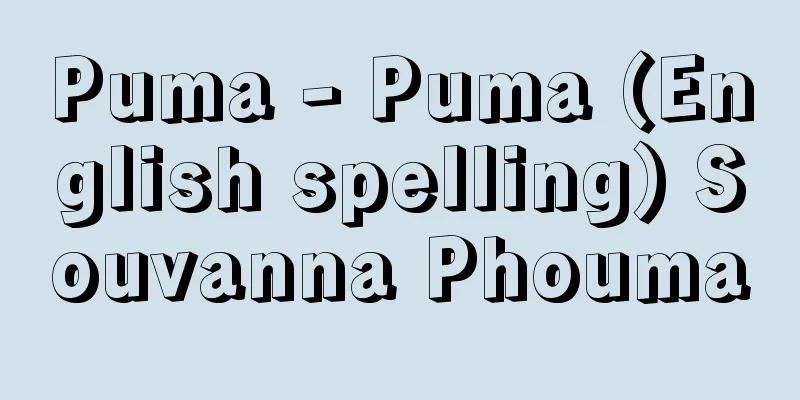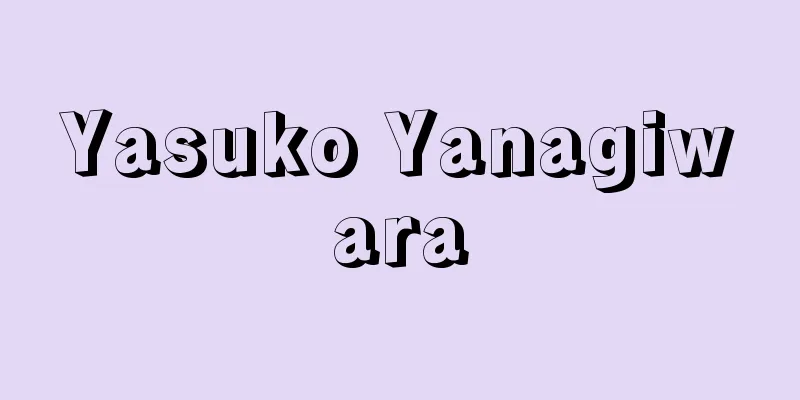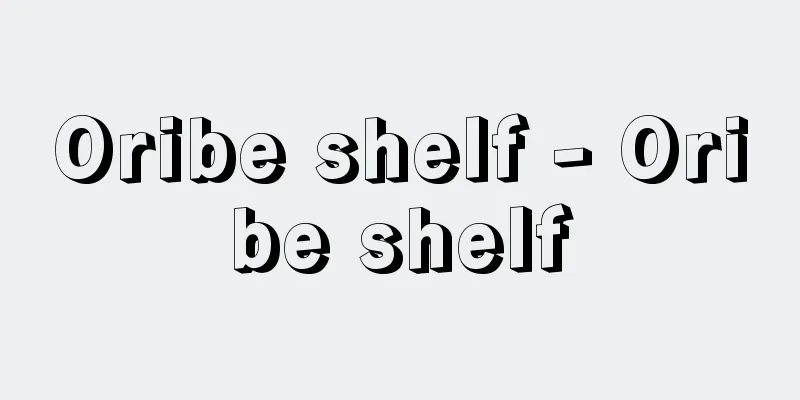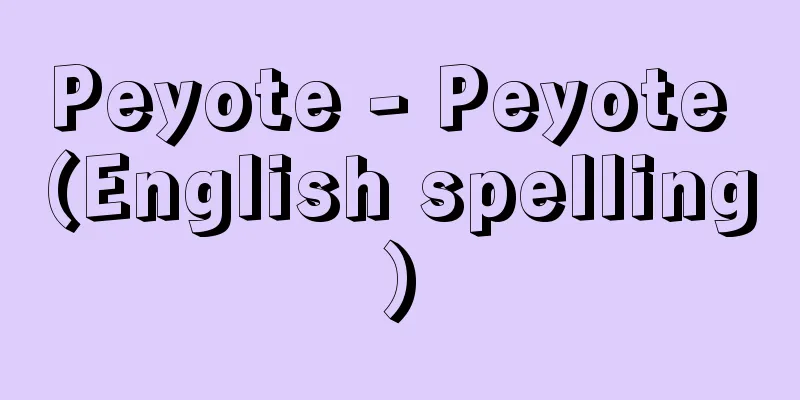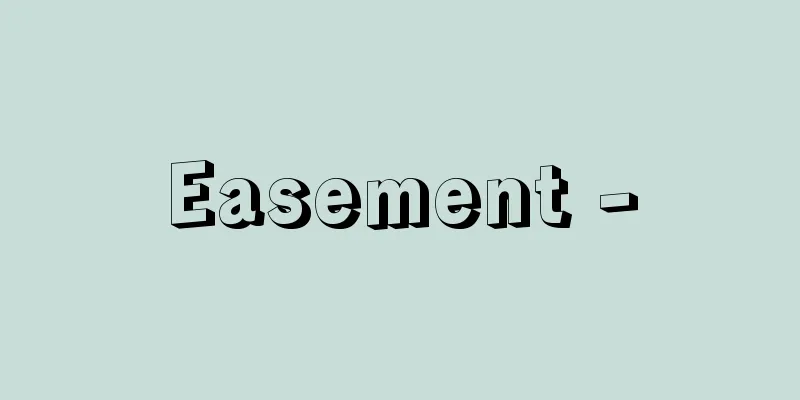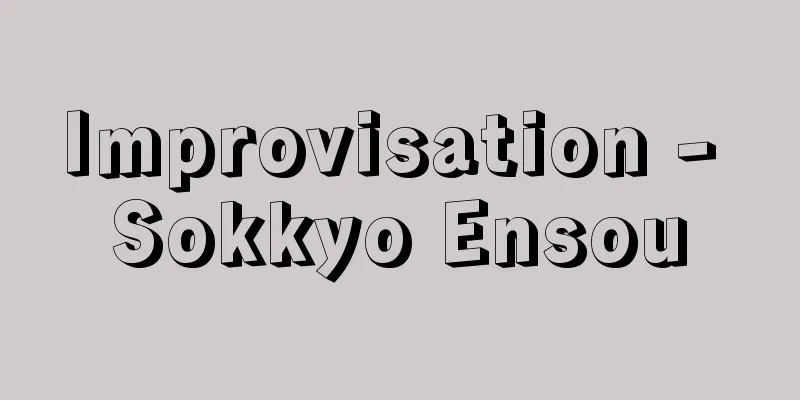Flying white

|
A type of Chinese character style. It is a unique style in which white areas without ink appear scattered among the brush strokes, in other words, extremely faint lines that undulate and fly with vigor. The surface of the brush that touches the paper is inverted, and it is thought that a special brush like a paintbrush was used. According to "Shudan" written by Zhang Huaiguan of the Tang Dynasty, Cai Yong of the Later Han Dynasty devised this style of calligraphy after seeing a plasterer using a broom (a broom used to paint walls) at the gate of Hongdu in the capital Luoyang, and it was intended for the inscription on the gate plaster of a palace. The oldest surviving example is the inscription "Shinshinomei" of Emperor Taizong of the Tang Dynasty, and others include the inscription "Daitō Kikōshō" of Emperor Gaozong of the Great Tang Dynasty and the inscription "Shōsen Taishi no Hi" of Empress Wu Zetian. It is noteworthy that many of these were hand-painted by the emperor himself, and they are thought to have been favored mainly by the imperial court from the Tang Dynasty onwards. The inscription of the "Shōsen Taishi no Hi" in particular has bird shapes scattered throughout the dotted lines, placing emphasis on decorativeness. There is no doubt that the "One Volume of Birds and Beasts Flying White" that appears in the "Letter Dedicating Miscellaneous Writings" in Volume 4 of Kukai's "Shoryōshū" is a calligraphy of this kind. In the same volume of the same work, "Table of Liu Xiyi's Writing and Dedication of a Collection," he presents his handwritten Hihaku to Emperor Saga, stating, "This is a volume of the Hihaku. I once saw this style when I was in the Tang Dynasty and decided to write it as an experiment...." This suggests that Kukai was the pioneer of Hihaku in Japan. Kukai's representative Hihaku remains include the inscription of the founder's name in the "Shingon Seven Patriarchs' Statue" (Toji Temple, Kyoto), and his "Junyoze," which was handed down to Jingoji Temple in Kyoto and was stolen and burned in the early Meiji period, was written in a style that had a stronger tendency toward hobby and play. [Tamiko Oshita] Source: Shogakukan Encyclopedia Nipponica About Encyclopedia Nipponica Information | Legend |
|
漢字の書体の一種。筆線の中に墨のつかない白い部分がとびとびに現れる、つまりきわめてかすれた線が、波動し、また勢いよく飛翔(ひしょう)している独特の書体をいう。紙に接触する筆の面が転折で表裏反転しており、刷毛(はけ)のような特殊な筆を用いたと想像される。唐の張懐瓘(ちょうかいかん)の著『書断』によれば、後漢(ごかん)の蔡邕(さいよう)が都洛陽(らくよう)の鴻都(こうと)の門で左官職人が堊帚(あくそう)(堊(かべ)を塗る箒(ほうき))を使っているのを見て考案した書法で、宮殿の門額の題署のためのものであったという。現存最古の例は、唐の太宗の「晋祠銘(しんしのめい)」の題額で、ほかに高宗の「大唐紀功頌(だいとうきこうしょう)」額、則天武后の「昇仙太子碑(しょうせんたいしのひ)」額などがある。皇帝自らの手になっているものの多いことが注目され、唐代以後は宮廷を中心に愛好されたと思われる。ことに「昇仙太子碑」額は、点画のところどころを鳥の形に描いており、装飾性に重点が置かれている。空海の『性霊集(しょうりょうしゅう)』巻第四の「雑書迹を奉献する状」にみえる「鳥獣飛白一巻」というのは、このような書であったものに相違ない。また、同書同巻「劉希夷(りゅうきい)が集を書して献納する表」に、「飛白の書一巻、是(こ)れ在唐の日、一たび此(こ)の体を見て試みに之を書す。……」として、自筆の飛白を嵯峨(さが)天皇に献じていることから、わが国の飛白の嚆矢(こうし)は空海であると考えられる。空海の代表的飛白の遺品には『真言七祖像』の賛(京都・東寺)の祖師の名号があり、また、京都・神護寺伝来で明治初年に盗難ののち焼失した彼の「十如是(じゅうにょぜ)」は、さらに趣味的、遊戯的な傾向を強めた飛白で書かれていた。 [尾下多美子] 出典 小学館 日本大百科全書(ニッポニカ)日本大百科全書(ニッポニカ)について 情報 | 凡例 |
Recommend
canal organ
...Similar structures are also found in the audit...
Siniperca
…A general term for freshwater fish belonging to ...
Substructure - Kabukozo (English spelling) Unterbau German
In historical materialism (Marxist social science...
Tanzam Railway
This railway connects Dar es Salaam in eastern Tan...
Persimmon Dropping - Kokera Otoshi
A theater term referring to the opening performanc...
Wage gap by educational background
...One aspect of the age-based wage gap is the di...
American Social Democratic Party
…Debs was arrested and imprisoned, but this led t...
Ayukai Kaien - Ayukai Kaien
…While teaching at the First Higher School and Ko...
Prague - Praha (English spelling)
The capital of the Czech Republic. It is the coun...
Demian
A novel by Hesse, published in 1919. It depicts th...
Securities Salesperson
A person engaged in securities sales. A securities...
Stances et poems (English)
…His real name was René-François-Armand Prudhomme...
Culocedrus decurrens (English spelling) Culocedrus decurrens
… [Makoto Nishida]. … *Some of the terminology th...
Tokiwa [town] - Tokiwa
A former town in Tamura County in central-eastern ...
Qalqashandī (English spelling)
1355‐1418 He was one of the three great encycloped...


